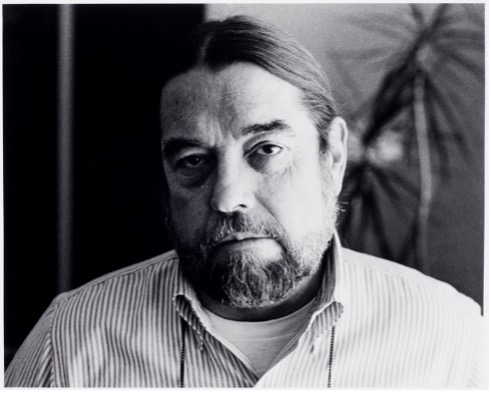by Charlie Farmer

“Once you open the shutter of a camera you have made the first
manipulative step away from the real. Any step you take beyond
that is really only a relative position on a sequential continuum of
possible alteration.” ~ Robert Heinecken, Manipulative Photography, 1967.
I recently participated in a free on-line course offered by the Museum of Modern Art (MOMA) titled “Seeing Through Photographs.” The course included a short history of photography and contained sections on many modern photographers. One who made the most impact on me was Robert Heinecken. He founded the photography program within the UCLA art department in 1962, and taught there until 1991.
Heinecken viewed photography as art– right along with painting and other recognized forms of creative expression. But the question has persisted: is photography art? Everybody has a camera these days and can take a decent picture. But knowing how to write is not enough to make you a poet or a novelist.
In my view a camera has utility. Anybody can snap a photograph. But anybody can also pick up a paint brush as well and paint a picture. (It is a lot easier to get some kind of decent result with a camera.) Heinecken compared the term “photography” to “sculpture.” He says that the term photography does not define photographic activity any more than the word sculpture “…goes to define the various processes by which a three-dimensional object might be formed.”
Manipulative Photography
The MOMA course materials included several short articles written by Heinecken. Reading these really reenforced the view that photography can truly be a creative process. Heinecken states “The term photography, as we understand it and use it, has come to be synonymous with ‘straight photography’.” He goes on to say: “I should like to see us broaden our concept of what photography is or can be.” (From Manipulative Photography, written in 1967.) He follows with quite a list of items that I think today’s photographers and artists would consider quite common.
Heinecken was interested in “synthesizing” and creating an “object” rather than merely “selecting” a subject for a photograph. In his view photography should strive to produce “…vital objects which create an intrinsic world of their own. . . . In most well done (or well seen) conventional photographs, it seems to be the selection of the particular combinational relationships of the above inherent lenticular ingredients which determines quality. I feel that I am involved in the application of these same factors and principles not as they are found/selected, but as they are synthesized or produced additively.” This is a foundational idea to me. (The articles from the course can be found here.)
In his work, Heinecken often used his photographs repeatedly in multiple ways. Nor did he always use a camera. One of his best-known projects is “Are you Rea.” It is a series of 24 images, what Heinecken called “photograms,” made from 1964 to 1968. These were made by placing a single magazine page on a light table and exposing it on contact paper so that images of both sides are visible. For more on this from the MoMA go to Are You Rea […].
The Inspiration
Even with the ubiquity of Photoshop and other manipulative products, I have generally clung to the idea that the photograph should accurately represent reality—document an event, tell a story, catch the decisive moment, etc. Perhaps I am still stuck in the sixties. But taking a cue from Heinecken, I am trying to explore a broader concept of photography. I embarked on several photographic experiments that attempt to synthesize and to create objects with “intrinsic worlds of their own.” So, in order to recognize the impact of this pioneering photographer I have titled my exhibit “Inspired by Robert Heinecken.”
Conveniently, these experiments also provide answers to a question that has dogged me for some time: what can I do with all (at least some of) the photographs that I have taken? I invite you to view “Inspired by Robert Heinecken” in the Brightchain digital photo gallery.
